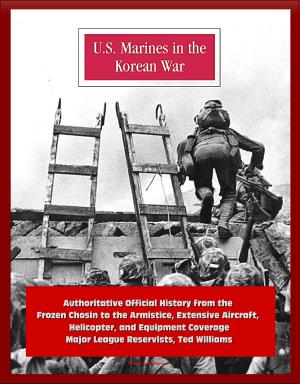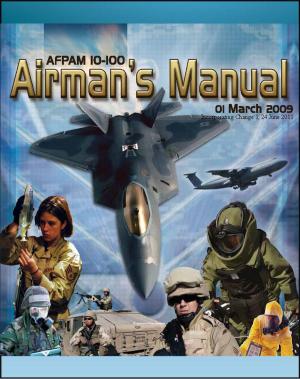Marines in World War II Commemorative Series: From Makin to Bougainville: Marine Raiders in the Pacific War - Weapons and Equipment, Raider Training Center, Enogai, Bairoko, Operation Cleanslate
Nonfiction, History, Military, World War II| Author: | Progressive Management | ISBN: | 9781301262403 |
| Publisher: | Progressive Management | Publication: | January 16, 2013 |
| Imprint: | Smashwords Edition | Language: | English |
| Author: | Progressive Management |
| ISBN: | 9781301262403 |
| Publisher: | Progressive Management |
| Publication: | January 16, 2013 |
| Imprint: | Smashwords Edition |
| Language: | English |
The historic battle of the Marines in Okinawa is recounted in this U.S. Marines history book. Some of the subjects covered include: Major James Roosevelt, weapons and equipment, raider training center, New Georgia, Solomon Sea, Enogai, Bairoko, Operation Cleanslate.
Here is an excerpt:
In February 1942, Lieutenant General Thomas Holcomb, the Commandant of the Marine Corps, ordered the creation of a new unit designated the 1st Marine Raider Battalion. This elite force, and its three sister battalions, went on to gain considerable fame for fighting prowess in World War II. There is more to the story of these units, however, than a simple tale of combat heroics. The inception, growth, and sudden end of the raiders reveals a great deal about the development and conduct of amphibious operations during the war, and about the challenges the Corps faced in expanding from 19,000 men to nearly a half million. The raiders also attracted more than their share of strong leaders. The resulting combination of courage, doctrine, organization, and personalities makes this one of the most interesting chapters in Marine Corps history.
Two completely independent forces were responsible for the appearance of the raiders in early 1942. Several historians have fully traced one of these sets of circumstances, which began with the friendship developed between Franklin D. Roosevelt and Evans F. Carlson. As a result of his experiences in China, Carlson was convinced that guerrilla warfare was the wave of the future. One of his adherents in 1941 was Captain James Roosevelt, the president's son. At the same time, another presidential confidant, William J. Donovan, was pushing a similar theme. Donovan had been an Army hero in World War I and was now a senior advisor on intelligence matters. He wanted to create a guerrilla force that would infiltrate occupied territory and assist resistance groups. He made a formal proposal along these lines to President Roosevelt in December 1941. In January, the younger Roosevelt wrote to the Major General Commandant of the Marine Corps and recommended creation of "a unit for purposes similar to the British Commandos and the Chinese Guerrillas."
These ideas were appealing at the time because the war was going badly for the Allies. The Germans had forced the British off the continent of Europe, and the Japanese were sweeping the United States and Britain from much of the Pacific. The military forces of the Allies were too weak to slug it out in conventional battles with the Axis powers, so guerrilla warfare and quick raids appeared to be viable alternatives. The British commandos had already conducted numerous forays against the European coastline, and Prime Minister Winston S. Churchill enthusiastically endorsed the concept to President Roosevelt. The Marine Commandant, Major General Thomas Holcomb, allegedly succumbed to this high-level pressure and organized the raider battalions, though he himself thought that any properly trained Marine unit could perform amphibious raids.
The historic battle of the Marines in Okinawa is recounted in this U.S. Marines history book. Some of the subjects covered include: Major James Roosevelt, weapons and equipment, raider training center, New Georgia, Solomon Sea, Enogai, Bairoko, Operation Cleanslate.
Here is an excerpt:
In February 1942, Lieutenant General Thomas Holcomb, the Commandant of the Marine Corps, ordered the creation of a new unit designated the 1st Marine Raider Battalion. This elite force, and its three sister battalions, went on to gain considerable fame for fighting prowess in World War II. There is more to the story of these units, however, than a simple tale of combat heroics. The inception, growth, and sudden end of the raiders reveals a great deal about the development and conduct of amphibious operations during the war, and about the challenges the Corps faced in expanding from 19,000 men to nearly a half million. The raiders also attracted more than their share of strong leaders. The resulting combination of courage, doctrine, organization, and personalities makes this one of the most interesting chapters in Marine Corps history.
Two completely independent forces were responsible for the appearance of the raiders in early 1942. Several historians have fully traced one of these sets of circumstances, which began with the friendship developed between Franklin D. Roosevelt and Evans F. Carlson. As a result of his experiences in China, Carlson was convinced that guerrilla warfare was the wave of the future. One of his adherents in 1941 was Captain James Roosevelt, the president's son. At the same time, another presidential confidant, William J. Donovan, was pushing a similar theme. Donovan had been an Army hero in World War I and was now a senior advisor on intelligence matters. He wanted to create a guerrilla force that would infiltrate occupied territory and assist resistance groups. He made a formal proposal along these lines to President Roosevelt in December 1941. In January, the younger Roosevelt wrote to the Major General Commandant of the Marine Corps and recommended creation of "a unit for purposes similar to the British Commandos and the Chinese Guerrillas."
These ideas were appealing at the time because the war was going badly for the Allies. The Germans had forced the British off the continent of Europe, and the Japanese were sweeping the United States and Britain from much of the Pacific. The military forces of the Allies were too weak to slug it out in conventional battles with the Axis powers, so guerrilla warfare and quick raids appeared to be viable alternatives. The British commandos had already conducted numerous forays against the European coastline, and Prime Minister Winston S. Churchill enthusiastically endorsed the concept to President Roosevelt. The Marine Commandant, Major General Thomas Holcomb, allegedly succumbed to this high-level pressure and organized the raider battalions, though he himself thought that any properly trained Marine unit could perform amphibious raids.















